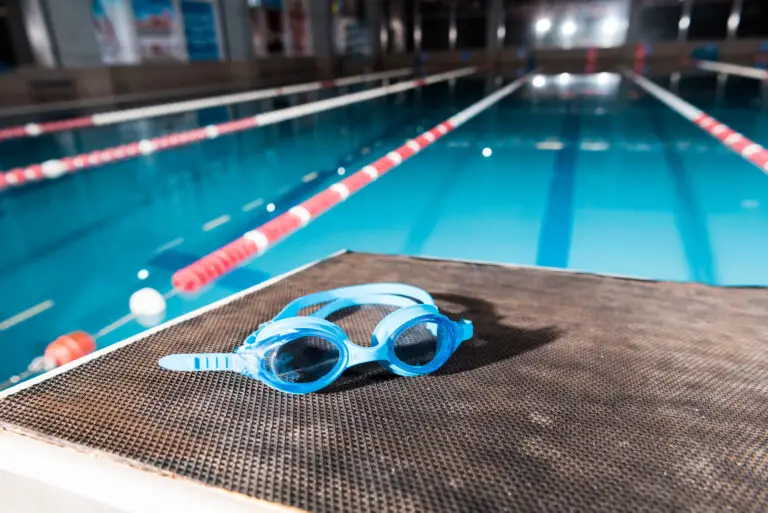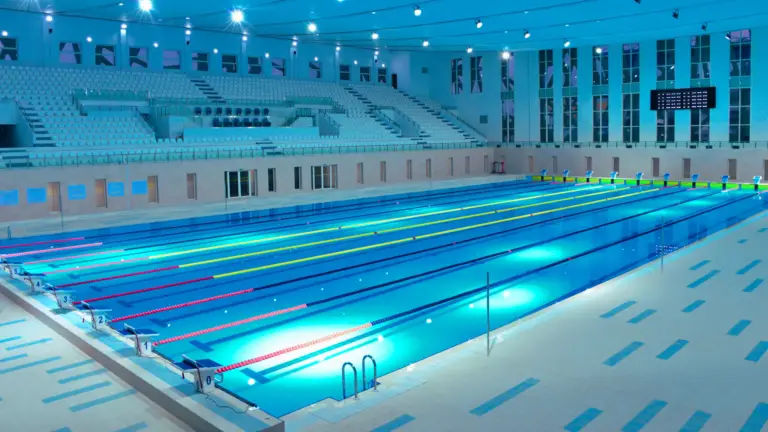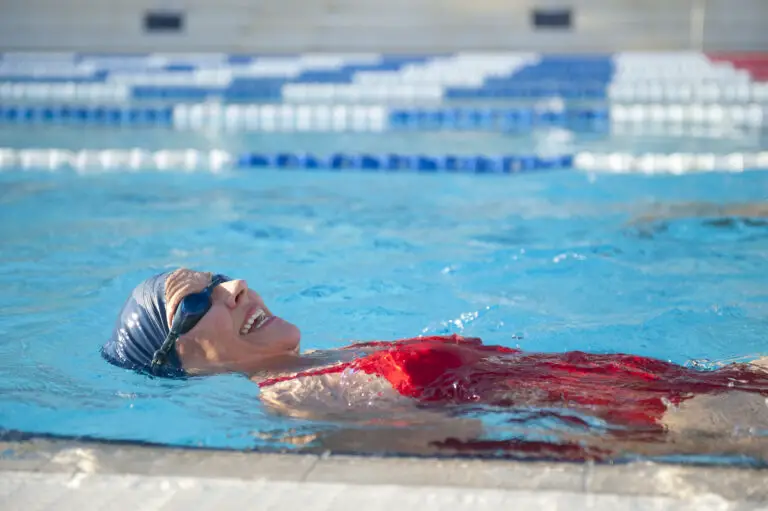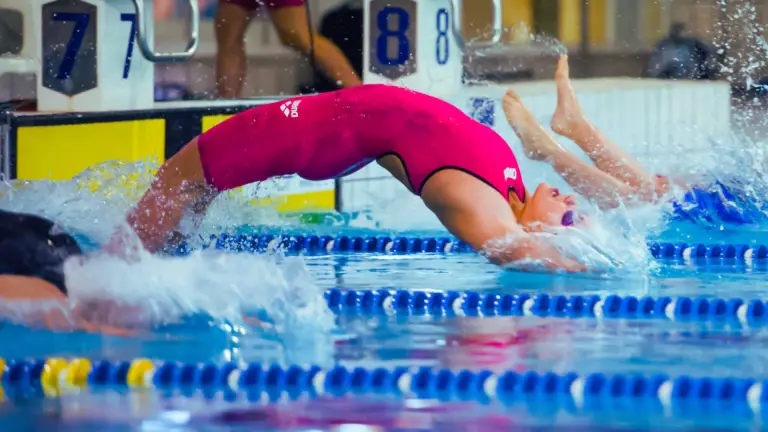Introduction: A First-Hand Look into the World of Swim Meets
I remember my first swim meet like it was yesterday. The excitement, the anticipation, the nerves. As a young, aspiring swimmer, it was a momentous occasion. The energy in the air was electric, a palpable buzz of competition. Parents, coaches, and swimmers converged upon the venue, and their hopes and dreams manifested in the form of speedos and swim caps. It was an entirely new world, one I was thrilled to dive into.
Dictionary Definition of a Swim Meet
So, what exactly is a swim meet? The dictionary definition is simple: “A swimming competition between two or more teams.” However, this doesn’t quite capture the full experience. A swim meet is an opportunity for a swimmer to compete in various strokes and distances while trying to reduce their personal times. It’s the stage where swimmers qualify for prestigious events like the National or Olympic Trials. For high school swimmers, it’s a chance to showcase their skills to college recruiters. Imagine it as a basketball game for swimmers, a culminating event that puts all their hours of practice on display.
The Swimmer’s Perspective
From the perspective of a swimmer, a swim meet is a test of endurance, skill, and mental fortitude. It can be a long day, running from 2 to 6 hours or even longer, depending on the number and ages of the competitors. It’s a hot, loud, and chaotic environment, filled with the cheers of spectators and the pounding hearts of swimmers.
The actual racing is a rollercoaster of emotions. It’s the adrenaline rush as you mount the block, the fierce competition as you slice through the water, and the desperate push in the final meters. Every stroke, every breath counts. It’s a race against the clock and the swimmer next to you. Victory isn’t just about who touches the wall first; it’s about achieving personal bests and overcoming your doubts.
Yet, the swim meet experience extends beyond the pool. It’s the camaraderie with your teammates, the constructive feedback from your coach, and the proud cheers from your parents. It’s a grueling yet rewarding journey that transforms you as a swimmer and, more importantly, as a person.
The Parent’s Viewpoint
For parents, a swim meet is a kaleidoscope of emotions. It’s waking up in the early morning and staying up late into the night, enduring the cacophony of cheers and the pungent smell of chlorine in a tightly packed seating area. It’s the thrill of watching your child chase their dreams, your heart pounding in sync with theirs as they leap off the blocks and into the pool.
Every swim meet is a testament to the countless hours your child has spent honing their skills. It’s a celebration of their growth, both as a swimmer and as an individual. You cheer for them, even if they can’t hear you, and you make full body motions, even if they can’t see you. The pride that swells in your chest when they achieve what they set out to do is indescribable. But it’s also about comforting them when they fall short, reminding them that every setback is a setup for a comeback.
The Coach’s Definition
From a coach’s perspective, a swim meet is a test of patience and endurance. It’s a marathon event that starts early and can extend late into the night, often running from Friday through the weekend. It involves standing for long hours under hot lights, keeping track of dozens of swimmers, and managing team dynamics.
But it’s also a rewarding experience, as you get to see the fruits of your trainees’ hard work. You have a unique vantage point, having seen the sweat and tears that go into every practice. At a swim meet, it’s time for the rest of the world to see what you’ve seen all along – the determination, courage, and skills of your swimmers. It’s witnessing them push past their fears and pain to reach the next level, a testament to their strength and your guidance.
The Anatomy of a Swim Meet: Key Terms and Procedures
Understanding a swim meet also involves familiarizing yourself with some key terms:
- Heat: A division of an event when there are too many swimmers to compete at the same time.
- Lane: The specific area in which a swimmer is assigned to swim.
- Seed: The initial time a swimmer has entered an event, used to arrange the heats.
- Relay: An event in which four swimmers participate as a team, each swimming a portion of the total distance.
Looking for more information on heat sheets? Check out my article here.
A typical swim meet follows a specific procedure:
- Warm-up: Swimmers get used to the water and warm up their muscles.
- Event calls: The announcer calls swimmers to report for their events.
- Seeding: Swimmers are arranged into heats based on their seed times.
- Racing: Swimmers compete in their respective events.
- Results: Times are recorded, and winners are announced.
Remember, every swim meet is a unique experience, whether you’re a swimmer, a parent, or a coach. Embrace the chaos, the noise, the anticipation – it’s all part of the beautiful tapestry that makes up the world of swimming.
Types of Races and Distances
At a swim meet, you can expect to see races featuring the four main swim strokes: the Freestyle, Backstroke, Breaststroke, and Butterfly. Races are categorized by stroke and distance. Distances vary from the 50-yard/meter “sprint” events to the longer 400, 800, and 1500-meter freestyle events. The Individual Medley (IM) races, a mix of all four strokes, are also a key part of swim meets. Relay events, where four swimmers each swim a portion of the total distance, add a team dynamic to the largest individual sport. The stroke and distance each swimmer will compete in depending on their age, skill level, and the specifics of the meet.
The Importance of Time in a Swim Meet
Time is the heartbeat of a swim meet. The official time is the final time recorded for a swimmer’s race, determining their placement in the event. Split times refer to the time taken for individual segments of a race. The concept of “dropping time” is crucial in competitive swimming; it refers to a swimmer improving their time from previous performances. Success is often measured not just in wins but in the ability to continually “drop time,” reflecting the swimmer’s progress and hard work.
Swim Meet Essentials: Goggles, Swimwear, and More
When heading to a swim meet, it’s important to pack the essentials:
- Swimwear: Competition swimsuits are designed to reduce drag and optimize performance. They are typically more form-fitting than practice suits.
- Goggles: These protect your eyes from chlorine and help with visibility in the water. It’s advisable to bring an extra pair in case one breaks or gets lost.
- Swim Cap: Helps reduce drag and keeps your hair out of your face.
- Towels: You’ll need them for drying off between events. Pack more than one.
- Healthy Snacks and Hydration: Swim meets can be long. Stay fueled and hydrated.
- Extras: These include items like parkas, flip-flops, sunblock (for outdoor meets), and extra clothing for warmth.
Looking for the best gear? Check out our comprehensive articles here:
Remember, every swim meet is a new opportunity to challenge yourself, improve your times, and enjoy the spirit of competition. So gear up, dive in, and have a blast!
Preparation for a Swim Meet: Training, Diet, and Mindset
Preparing for a swim meet involves careful attention to training, diet, and mindset. Training should be consistent and should increase in intensity as the meet approaches. A well-balanced diet is crucial for providing the energy needed for high-intensity training and for recovery. Carbohydrates for energy, proteins for muscle repair and growth, and fats for satiety and nutrient absorption should all be included. Hydration is equally important. The right mindset is also vital. Swimmers should set realistic goals, stay positive, and focus on their own progress rather than comparing themselves to others.
FAQs
Conclusion
Participating in a swim meet is a journey that involves much more than just swimming. It’s a test of preparation, determination, and resilience. It’s about the thrill of competition, the joy of personal bests, and the lessons learned from every race. For a swimmer, a swim meet is an opportunity to shine, to challenge oneself, and to become a better athlete and individual. It is indeed a journey that goes beyond the pool, impacting the swimmer’s life in profound ways. And this journey, with all its ups and downs, victories and losses, is what makes every dive, every stroke, and every finish worth it.






